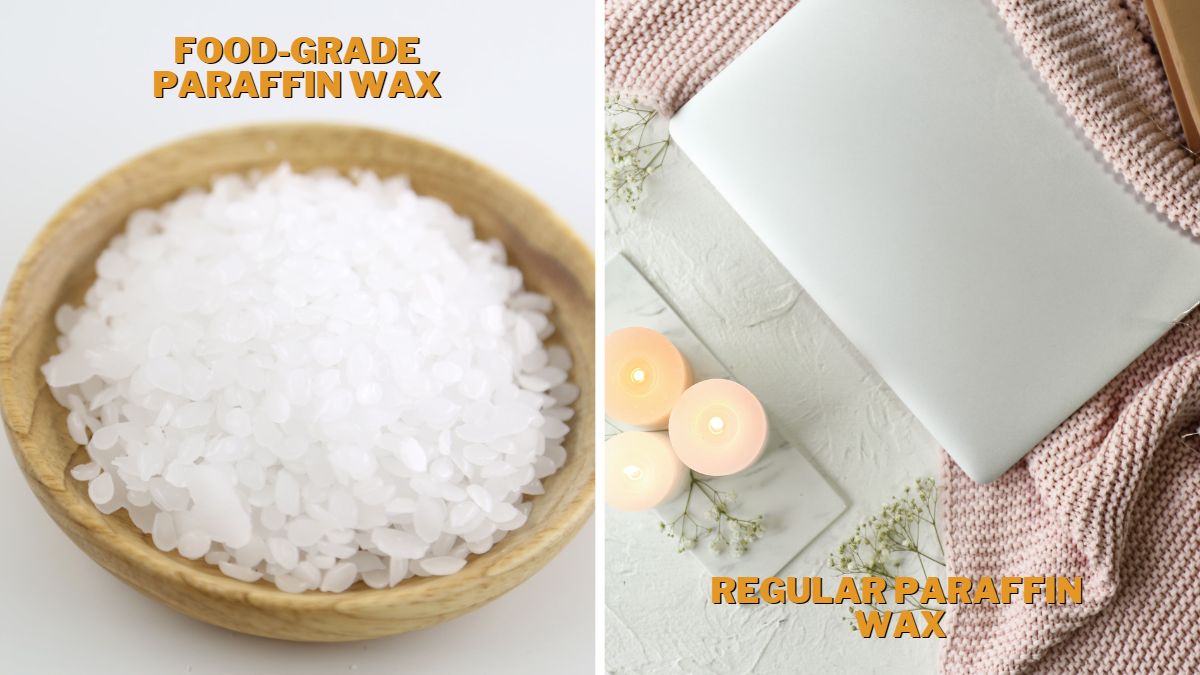Paraffin Wax in Chocolate: What Does It Do & Substitutes

Have you ever wondered how some chocolate-based treats get so shiny? Do you need help reproducing the same amount of sheen on your chocolate? If so, then paraffin wax is just the solution you need. I’ve recently been to a chocolate-making workshop, and I learned some interesting things that I think you should know. So what does paraffin wax do, and what are its substitutes?
Snack makers use paraffin wax to coat chocolate, candies, fruits, and sausages to make them look more attractive. Instead of paraffin wax, you can substitute vegetable oil, cocoa butter, or confectionery coating.
Now that we know what paraffin wax does, let’s look at it in detail to see how it can help us in the chocolate-making process. We’ll also explore substitutes to use in place of paraffin wax in detail. Let’s dive in!
Why Is Paraffin Added to Chocolate?
Paraffin wax is usually added to chocolate to give it a smooth, shiny appearance and to help it keep its shape and texture better. Many home cooks share their tales online on how the lack of paraffin wax has made their chocolate-based treat hard to shape and unsightly.
However, it’s important to note that large quantities of paraffin wax are not digestible. And although the US Food and Drug Administration has approved the use of food-grade paraffin wax for coating purposes, its use in food products is generally discouraged. [1]
If you don’t want to use paraffin wax, but the recipe calls for it, don’t worry. Alternatives to paraffin wax do exist, such as cocoa butter and other vegetable-based oils, but I will say more about them below.
How Much Paraffin Wax Do You Add to Chocolate?
The amount of paraffin wax varies depending on the product and the finished chocolate’s desired properties. In general, however, the amount of paraffin wax used is relatively small — about an ounce of wax for every 12 ounces of chocolate.
It’s essential to use the minimum amount of paraffin wax necessary to achieve the desired effects, as using too much can affect the taste and texture of the chocolate. Not to mention the potential adverse effects of consuming large amounts of paraffin wax, such as intestinal obstruction and constipation. [2]
This is why I always make sure to check the amounts twice, and I think this is a good way to keeping your paraffin wax amount in check.
Is Paraffin Wax Dangerous?
Regular paraffin wax (not food-grade) is generally not considered dangerous when used as intended. It is a commonly used ingredient in candles, cosmetics, and other personal care products. You’ve already been in contact with paraffin wax without even realizing it.
Keep in mind, however, that regular paraffin wax is not safe to use in food. Although paraffin wax is not poisonous when ingested in small amounts, it can cause digestive issues and other unintended problems.
Always double-check that the wax you’re buying is food-grade to ensure your safety. You’ll usually find them in the baking aisle of your supermarket. If the packaging says “household wax” or mentions “canning” and “candle-making” as its ideal uses, it’s not food-grade.
What’s the Difference Between Food-Grade Paraffin Wax and Regular Paraffin Wax?
Food-grade paraffin wax is made from pure, refined paraffin and meets food safety standards set by regulatory agencies such as the FDA. It’s often used as a glazing agent on fruits and vegetables and as a coating on cheese and other dairy products to prevent moisture loss. You’ll also find it in some candies and other confectionery products.
On the other hand, regular paraffin wax is a general term that refers to any paraffin wax that’s not intended for use in food products. It is commonly used in candles, cosmetics, and other personal care products. Some people also use it to seal jars containing jams and preserves.

What to Use Instead of Paraffin Wax in Chocolate?
If you’d rather not use paraffin wax but still want that shine on your chocolate snacks, don’t worry. There are several alternatives to paraffin wax, and here are some of the common ones:
- Vegetable oil or vegetable shortening: Some bakers and chocolate makers use a small amount of vegetable oil, such as coconut oil, to give the chocolate a shiny finish. You can also use shortening instead.
- Cocoa butter: Add some cocoa butter to your melted chocolate if you want to keep things all-natural and cost-friendly. Doing so will ensure a glossy finish to your chocolate coating. You don’t even need to add that much — I usually only use the equivalent of 1 percent of my melted chocolate.
- Confectionery coating: Confectionery coatings can help make things easier for you — they have no cocoa butter and are specifically formulated for dipping. They are made from a blend of cocoa, oil, and sweeteners and can coat food without worrying about tempering the chocolate.
Remember that these alternatives may not produce the same sheen as paraffin wax. These alternatives exist for those who are wary of using petroleum-based products in their food. And before you use any of these alternatives, make sure you consider any possible allergic reactions that people might have.
To sum up, it might sound weird to hear someone say “paraffin wax” when teaching you how to temper chocolate for coating, but its use is more common than you think. From making the chocolate stable to giving it an attractive shine, it’s easy to see why home-based and commercial bakers turn to paraffin wax.
But if using wax on your food seems foreign to you, don’t panic. There are other alternatives you can use that produce a comparable effect as paraffin wax. It’s up to you to determine which choice works best for your needs.
Have you ever tried to make chocolate yourself? I’m excited to hear about your experience in the comments below!
